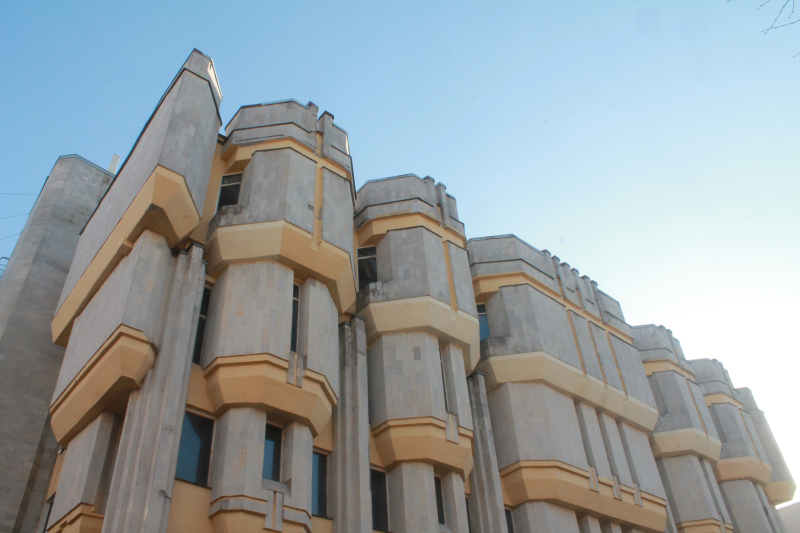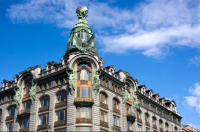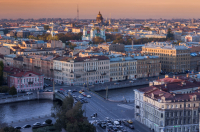While Brutalism as an architectural style stems from the UK, it became very popular in the USSR and the Socialist Bloc in general. The futuristic shapes and the focus on reliable materials and novel solutions reflected the aspirations of building a new future, and the lack of decorations was well in line with the rationalist outlook promoted by the Socialist ideology.
Structures of various purposes were built in this style – from common housing and hotels to museums and research facilities, and many became integral and well-recognized symbols of the cities they were built in. And even though this was not the case for St. Petersburg, our city still has more than a few examples that bear the unique Brutalist vibe.
Russian State Scientific Center for Robotics and Technical Cybernetics
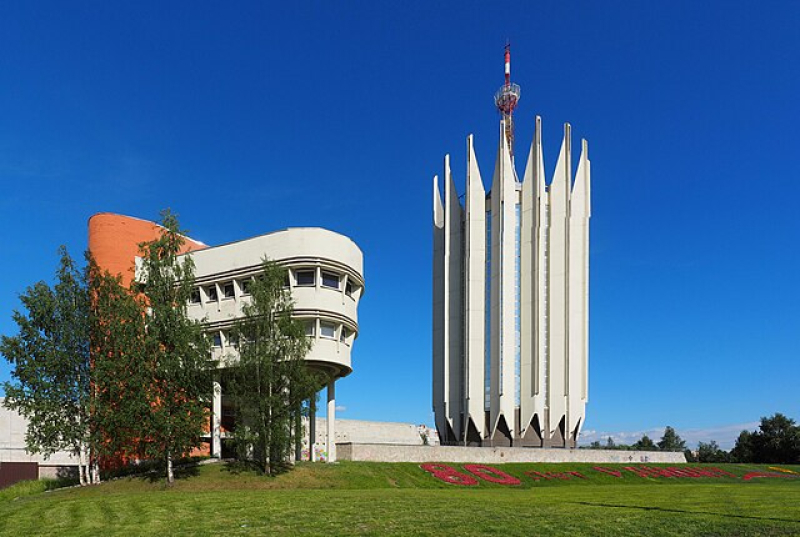
Russian State Scientific Center for Robotics and Technical Cybernetics. Credit: Artem Svetlov / Wikimedia Commons / CC BY 4.0 DEED
Address: Tikhoretskiy Prospekt 24
The first building on this list might well be the most famous piece of Brutalist architecture in St. Petersburg, mainly because of the 77-meter tower that looks like something out of a sci-fi movie. Its proximity to one of St. Petersburg’s biggest parks (which is really more of a forest) only strengthens the impression. The building’s purpose is also associated with space: the tower itself is hollow and was designed for testing spacecraft equipment such as robotic manipulator arms.
The complex dominates the surrounding area and leaves a lasting impression on anyone who sees it. Some feel inspired (when I was a kid, many of my peers seriously considered studying robotics only because they wanted to take a look at what’s inside), others find it eerie and somewhat sinister (which earned it the nickname “Sauron’s tower” among the locals).
“Houses with Chicken Legs”
The “chicken legs” up close. Credit: Vaija / Wikimedia Commons / CC BY 4.0 DEED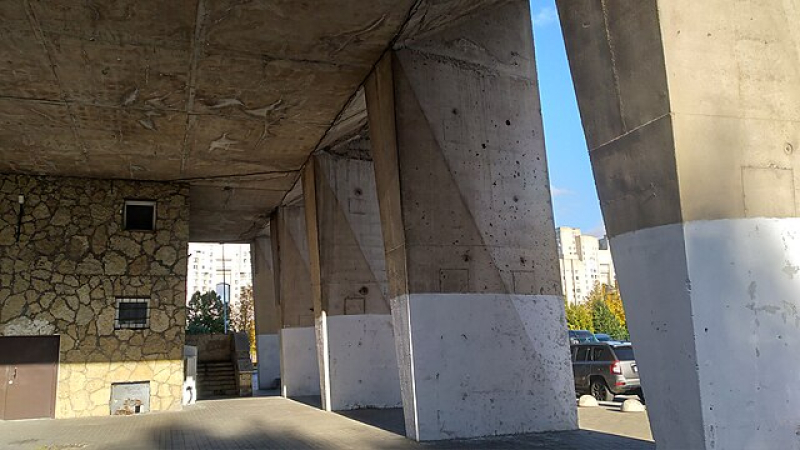
Address: Novosmolenskaya Embankment 2, 4, 6, 8
A great example of Brutalist housing development, this group of four buildings on Vasilyevsky Island are definitely eye-catching – they stand on relatively small pillars, making you wonder if they’ll fall. Built in the late Soviet Union, these were a part of a greater development project – a whole sequence of houses where every next one was higher than the other, complete with a lighthouse-like skyscraper by the seashore. Although this original idea never came to life, these houses are still a sight to see, so be sure to take a look at them if you ever come to this part of Vasilyevsky Island.
The Russ Hotel
The Russ Hotel. Credit: Vasilii Perov / ITMO.NEWS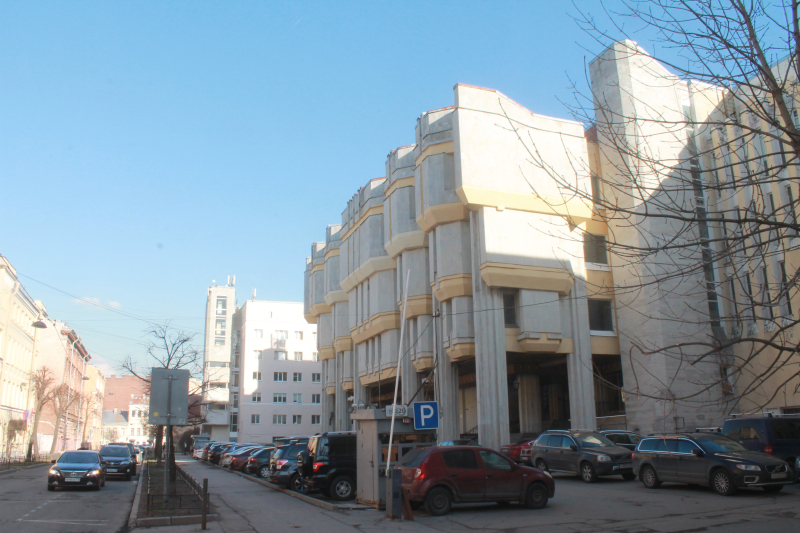
Address: Artilleriyskaya Street 1
As opposed to other buildings in this list, this one is located right in the city’s historical center, less than 10 minutes by foot from the Nevsky Prospekt. Originally a plain residential house from the 1930s, it was reconstructed in the late 1980s – and the result is still considered at the very least questionable. Its bulky appearance, with thick walls and gunport-like windows, makes the hotel look more like a fortification than a civil building, something that just can’t blend into the surroundings. Personally, I believe that it still looks good – but, given its central location, you might well go and see for yourself!
New Building of the Russian State Naval Archive
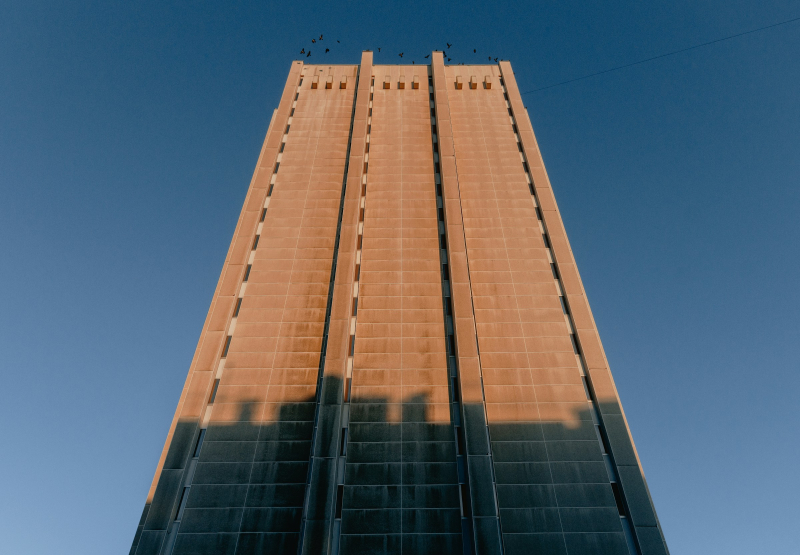
Credit: Lev Pereulkov (@pereulkov) via Unsplash
Address: Serebristyy Boulevard 24-1
While the above examples all have distinct traits that make them stand out, it is the plainness that makes this one so memorable. The new building of the Russian State Naval Archive is a towering rectangular box placed amidst an ordinary Soviet residential area, a utilitarian construction serving a utilitarian purpose – which is Brutalism at its most illustrative. The building took over 30 years to complete due to various delays and was finished in 2006, 15 years after the collapse of the USSR; nevertheless, it is a total must-see if you want to get an idea of what Soviet Brutalism looked like.
I hope you enjoyed the article! If you want to learn more about St. Petersburg’s architecture, be sure to check out our Architectural Gems series, or explore our other architecture articles.
